As a traveler, I have often tried to minimize my carbon footprint while traveling. But most of the things which I have done until now were passive actions.
So, this year, I have decided to actively take steps to further reduce my carbon footprint. And well, you can join me too. In this article, I will talk about the importance of sustainable traveling and how each of us can imbue it in our own lives.
Are you trying to practice sustainable tourism as well? Wondering about ways to reduce carbon footprint? Then. read on to know more about how you can do that.
Sustainable Tourism
Imagine. Barren lands covering the face of the earth. No water source in sight and the harsh sunlight burning off the skin on your body.
There is nowhere to hide, no shade to take cover under. People dying due to hunger and thirst. And every day, we are hit with a new disaster at our home.
Feels scary? Well, that is our earth 50 – 70 years from now if we continue producing greenhouse gases at the current rate.
Climate change is real. And for anyone who still doesn’t believe in global warming, all you have to do is check the recent news. You will see freaky and erratic weather behavior all over the world. Hailstorms falling over different regions unexpectedly while so many regions suffer from droughts.
Africa has been suffering through this climate change effects for years now. But most of us have a turned a blind eye to its suffering.
Well, that cannot be done anymore because you can see the effects in your own city now. We all have read in the news that the polar caps are melting and the sea temperature and level are rising day by day.
But still, it all seemed so far off right? The end of the world?
However, as we turned more selfish, the environmental degradation accelerated and we have no one but ourselves to blame now.
Cities experience higher temperatures and it is said that, by the end of this century, the global temperature will rise by almost 2 degrees. It is not a joke anymore and if we don’t take a step, it won’t be far before earth starts crumbling at last.
What is Carbon Footprint?
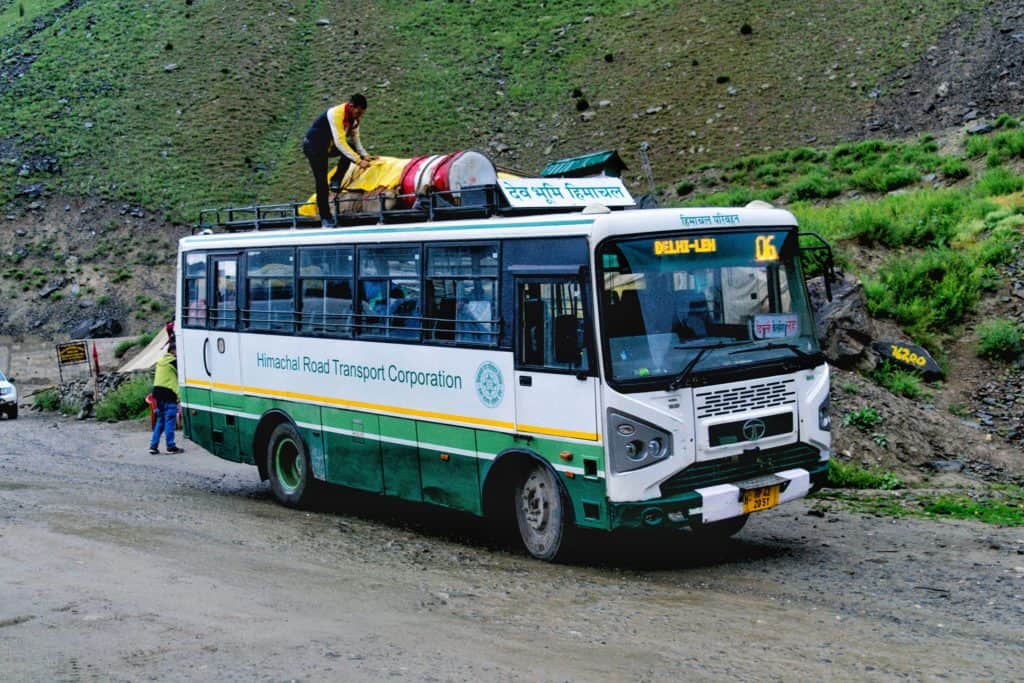
The first thing that we need to understand is that all our activities result in carbon emission directly or indirectly.
So, the carbon footprint is nothing but the total carbon emission made by a person or a product.
In simpler words, the carbon footprint is a complete estimate of the total CO2 and other greenhouse gases that are emitted by any product or service.
For example: When you drive every day to school or office, you are burning up fuel which releases a certain amount of CO2. Also, when you use Air-conditioners, heaters, and so on, you are using electricity, gas, coal, etc. which emit CO2. The production of food, clothing, etc. also emits some CO2.
Basically, a sum of all these products and services determine your yearly carbon footprint. If you want to check your own carbon footprint, you can use this global tool for calculating your carbon footprint.
As most of you people, I knew just a little about CO2 emissions. So, I figured if I am not wasting products and am recycling most of the things at home, I won’t be causing a high CO2 emission.
When I did check my carbon footprint, it was alarming to see that I was way over average count.
And when I analyzed my result, the most contribution came from the traveling sector. This is when it hit me that while I do love to travel, I cannot do it at the expense of our planet.
Yes, it is both my life and my job but that isn’t an excuse to keep making the same mistakes.
So, I decided to focus on sustainable travel tips to help reduce my carbon footprints. Now, what exactly do I mean by sustainable travel?
What is Sustainable Tourism? Why is it Important to Travel Sustainably?

You might have heard of terms like eco-travel, responsible travel, ecotourism, and so on. So, how is sustainable travel different from any of them?
Well, it basically means that you are able to travel long-term without harming the natural and cultural aspects of a place.
On the other hand, ecotourism usually means traveling responsibly to natural areas and help the local community. But sustainable travel basically includes all these other types of travel.
When you are traveling sustainably, you not only minimize the impact of your travel on the environment but you also take steps to help conserve the local culture and nature.
And well, at the rate we have been destroying our planet, it will no longer do to just follow eco-tourism or green travel concepts.
It is important that we follow sustainable traveling steps to help reduce the damage that we have already done so that the future generation can enjoy the planet too.
Effective Ways to Reduce Carbon Footprint
So, what exactly can you do to ensure that you are following the concept of sustainable travel?
Below, I have mentioned a few steps that you can take while traveling to minimize your impact on the environment.
You can choose to start small or you can choose to really make a difference by attempting the hardest ones.
Note: I am not proclaiming to have followed all (I used to follow a few of them) these steps before. But I am trying to imbibe all of them in my daily life now.
Understand the Impact of Traveling and Be Informed

The first step towards reducing your carbon footprint is by understanding the cause and the solution. Your first step should be to reflect on the choices that you make while traveling.
Do you carry your own bottle? Do you purchase food in plastic wrappings? Do you take taxis or public transportation while traveling?
You need to figure out how much impact your travel is causing. And then come up with a plan which will reduce the effect of your travels on the environment.
As I mentioned before, a good way to do this is by first calculating your carbon footprint. You can use this Carbon Footprint website to calculate your CO2 emission.
Apart from this, a few quick things to understand is that plastic is not recyclable. So, when you throw plastic, you are actually contributing to a lot of greenhouse gas emissions.
Try to minimize the use of plastic when you are traveling.
Another thing to keep in mind is that Petrol, Diesel, etc. also release CO2 gases in huge quantities. If you are taking private taxis, cars, etc. instead of buses, railways, etc. then you are contributing more CO2 gases.
Avoid Taking Flights for Traveling
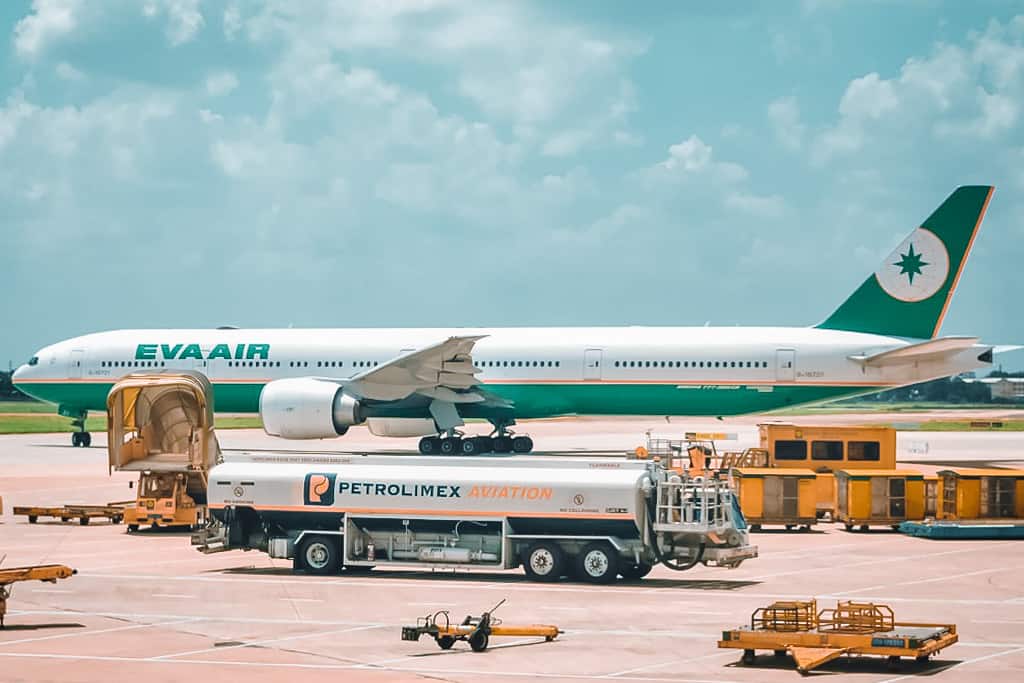
Now, one thing which causes the greatest impact on the environment is air travel. Yep, that’s right!
You could be not using plastic and could be doing everything in the book to follow sustainable traveling. But you take one long-distance flight and your carbon footprint is back to square one.
In fact, if you would research more about this, you will find that it has been estimated that air travel is the cause for 2-3% of the global CO2 emission.
And as more people have started to travel for business and leisure, this number is likely to increase in the future.
Now, you might be thinking that well, we can always plant a couple of trees while choosing air travel? Well, that is not the solution though.
According to the Environmental Protection Agency reports, greenhouse gas emissions are the major cause of climate change. And unless we become a low carbon emission society, there is no hope for this planet.
So, make sure that your first priority should be to reduce air travel. If you can take an overnight bus/train to reach a city then choose that instead of flying over there.
I know it is not convenient but if we want a working planet in the near future then we have to sacrifice a little of the comfort.
However, there are times when air travel is unavoidable. In such instances, you can carry less luggage and try to opt for flights that use biofuel.
Offset your Carbon Footprint

Well, thankfully, we don’t have to be guilty of being the reason behind climate change anymore. Because now you have an option to offset your carbon footprint which is known as carbon offsetting. But what does this even mean?
Well, a carbon offset program is how you can compensate for the CO2 emission caused directly/indirectly by you. You will have to pay for this program so that your carbon footprint can be reduced. Is it for real though?
It definitely is but you have to be careful as there are a lot of profit-making companies out there too.
Also, this should be chosen as the last resort. Your first instinct should be to follow sustainable traveling steps and not make up for the CO2 emission caused by you.
How does this work though?
Well, there are a few websites that help you calculate your carbon offset amount. This will rely on the miles you have flown, your travel class, type of aircraft, and the fuel used.
Once you have the amount, you can go to carbon offsetting projects and enter the amount that you need to offset.
You will be shown a couple of options at different prices which you can fund and make up for your CO2 emission. Honestly, this is the best way to compensate if you cannot avoid travel.
You can check out this Swiss non-profit which offers carbon offsetting options.
Carry Your Own Water Bottle
As I mentioned above, plastic is one of the major causes of greenhouse gas emission. And the quickest way to reduce it is by not purchasing plastic bottles.
Honestly, I don’t know how we didn’t notice it but plastic water bottles are everywhere! And this is a disaster.
From hotels to flights to trains, you get plastic disposable water bottles everywhere. And this convenience has made us contribute to plastic wastage in huge amounts. But this is something which can be easily rectified.
Just make sure that the next time you go on a trip, you get your own water bottle.
You can purchase a stainless steel or copper bottle to take with you while traveling. So, all you need to do is refill it and you will find a water source in most of the places.
This way, you won’t end up accumulating plastic bottles and can reduce plastic wastage. I always carry my own bottle because this does save a lot of money as well.
Refill the Water Bottle Rather than Buying It

As I said above, choose to refill your water bottle than buying a new one. This way, you can significantly reduce your carbon emission and employ sustainable traveling.
Plus, refilling the bottle is cheaper than buying a new one every time.
And if you are concerned about the water quality, then you can simply buy a filter water bottle. These water bottles have a filter inside which purifies the water before releasing it.
So, you can refill the water from nearby streams, wells, etc. without worrying about getting sick.
Personally, I have always found the mountain water to be pure and fresh. So, I have never been concerned about refilling my water bottle with it. And when traveling in cities, I usually can refill at the restaurants or hostels where I stay or eat.
Say No to Plastic
Another major contributor to climate change is the heaps of plastic waste lying around. It not only takes around 1000 years for a plastic product to decompose but its manufacturing also harms the environment. How?
Well, currently, most industries use non-renewable energy sources like natural gas, petroleum, etc.
As a result, So, it not only consumes the limited energy sources but pollutes the environment as well. Also, the transportation of these plastic products results in further energy consumption.
And let’s not forget how many animals have died due to it, thinking it to be food.
Sadly, almost all the shops and industry utilizes plastic. From shopping malls to hotels, you will find plastic everywhere. However, you can take steps and say no to plastic wherever you can so that.
For example: Don’t take free plastic bags which come with most food and products. Or you could not accept the free toiletries in the hotels/resorts.
Walk or Bicycle to Close Destinations

One of my personal favorite sustainable travel tips is to walk or cycle to nearby destinations. And honestly, it is not only good for the environment but you as well.
When you walk or cycle, you meet more locals and understand the culture better. Also, it can constitute as your daily exercise so it is a win-win situation.
Now, I usually walk for 4-5 km easily while traveling in a day. Sometimes, it can be as high as 15-20 km as well. But if you aren’t that habitual to walking then you can start for shorter distances.
Try to walk at least in the 3 km vicinity and you will end up exploring so many hidden gems as well.
For places which are 10-15 km away, you can always use the cycle. It will take you 30-40 minutes on an average but trust me, it will be fun.
In fact, on my first solo trip to Cambodia, I cycle around 50 km every day to see Angkor Wat, Killing Fields, etc.
Sure, it was tiring but definitely not impossible. And as a bonus, I have a fun accomplishment for myself. So, avoid taking motorable vehicles for short distances and opt for walking and cycling instead.
Try to Carpool as Often as Possible
Now, there will be a few places which are too far to cycle or walk. Well, in such cases, trying to carpool instead of taking a private vehicle is a great way for sustainable traveling.
There are also group tours for many places that are perfect for solo or budget travelers. And you don’t use the entire resources yourself so you reduce the impact on the environment as well.
A lot of places also have the option of shared taxis which are cheap and effective. So, if you need to take a vehicle then opt for shared taxis as frequently as you can.
Avoid Taking Private Taxis for Traveling
As I mentioned in the above point, one of the most effective sustainable travel steps is to avoid taking private vehicles. So, avoid using cars or taxis as much as you can.
You can choose shared taxis or carpool instead. Or you can choose one of the many public transportation options which are available.
And if you are planning for a road trip, make sure it is not just 1-2 people in the car. You can share your travel plans on Facebook or carpooling apps. This way, you can share gas/petrol costs and energy resources.
Use Public Transportation for Long Distances

Another effective sustainable travel tip is to use public transportation. This should be the case for both inter-city and intra-city travels.
For example: If you are traveling for 100 – 600 km, then you can easily take a bus. And if you are traveling farther than that, then opt for a train.
Inside the city too, for sightseeing, choose local buses, metros, etc. for traveling around. This way the transportation resources get shared and your carbon footprint is reduced greatly.
On the other hand, if you take private taxis, then you consume energy completely yourself. As a result, your actions emit more greenhouse gases and your carbon footprint is more.
And the best part is that using public transportation is cheap as hell. You end up paying half or 1/4th of what you would pay using a private vehicle.
Carry Your Own Shopping Bags for Storage
One of the biggest mistakes which I make while traveling is to not carry my own shopping bag. Sure, I do carry it at home when going to the market.
But when traveling, it often gets neglected. So, when you go shopping, you end up with plastic bags which you never wanted in the first place.
This is why it is important that we remember to store one shopping bag made out of jute or cloth to use while traveling. Or if the products are not likely to get spoilt then you can store them in your daypack as well.
This is one of the steps which I am going to actively follow this year to reduce my carbon footprint.
Eat Local Food as Much as Possible
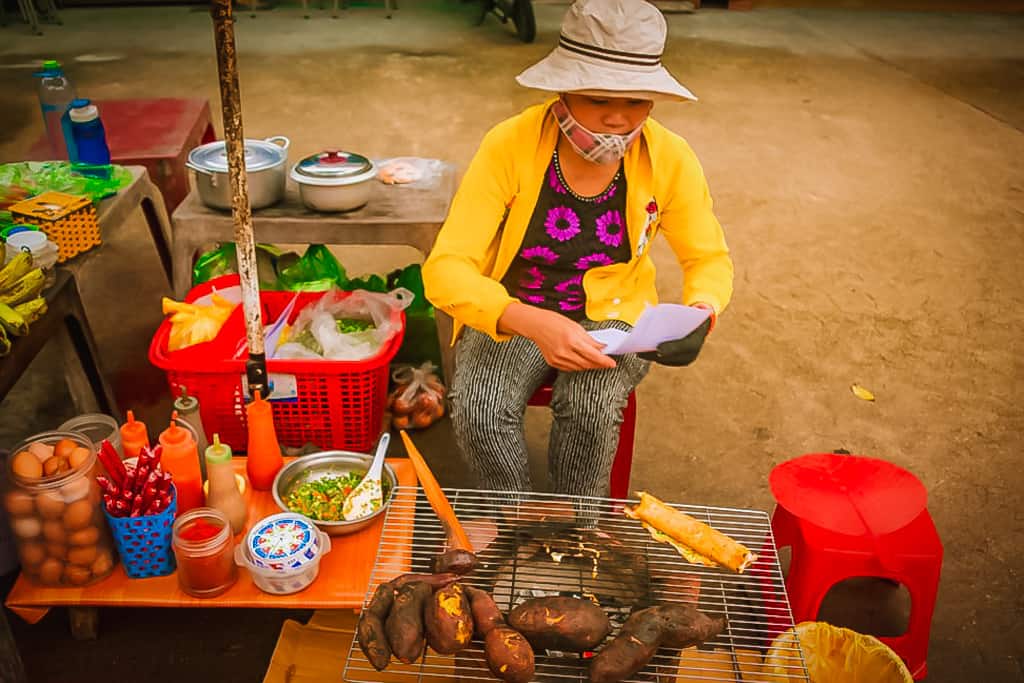
Frankly, this should be the easiest sustainable travel tip to follow. Eating local food is a great way to reduce your carbon emissions. How?
Well, because local and seasonal food doesn’t require manufacturing so the use of energy resources is limited.
Also, local food is usually fresh and cheap and gives great insight into the local culture. Plus, you will find so many food stalls and small food establishments in most places.
So, you can simply head there and enjoy a delicious meal without having to worry about plastic or CO2 emission.
And if you want to pack up the food, carry your own lunch box to do so. Sounds easy peasy right?
Avoid Buying Packaged Goods
Another important sustainable travel tip is to say no to packaged goods.
Packaged goods usually have a plastic covering which results in plastic waste. And I have already told you what happens with that waste and how harmful it is for our environment.
But apart from that, the manufacturing of packaged goods also consumes a lot of energy resources.
Also, the transportation of these goods results in the use of fuel. And all of this results in the emission of greenhouse gases.
So, instead of buying them, make sure you get the required products from your home. And always go for products that are locally produced and not imported.
This will greatly reduce your CO2 emission and will also help in promoting the local businesses.
Carry Reusable Products with You
One of the best and easiest sustainable travel tips is to reuse the products as much as you can. Try to pack reusable items like your own water bottle, shopping bag, toiletry bag, cloth napkin, and so on.
This will ensure that you don’t buy any new product on your trip, hence reducing your carbon footprint.
Use Biodegradable or Organic Products

Also, try to buy products that are organic or biodegradable. Basically, any product which can be reused or recycles easily can be considered for purchasing.
As I mentioned before, steel water bottles are a good choice for the long-term. You can also buy travel towels made up of cloth so that you can easily reuse them on the trip.
Get bamboo or wooden-based toothbrushes and wooden combs for daily use. And do carry your own jute or cloth bags for shopping and laundry usage while traveling.
Also, use eco-friendly products for taking a bath and washing your clothes. One such way is to use soap nuts which organic, biodegradable, and vegan-friendly.
Apart from that, you can also purchase bamboo straws or steel straws to use while traveling.
You can also get plastic-free food containers to carry your lunch or pack your food when you eat in a restaurant. Also, do carry your own reusable mug for coffee and other drinks while traveling.
You can use this mug for other drinks, especially if you are getting it from a drink stall.
There are so many other eco-friendly solutions that you will find for your trips. So, research properly and get these products for your next travel plans.
Always Throw Your Garbage in the Dustbin or Garbage Can
One of the biggest issues that we see while traveling is the garbage dumped all around the city or the mountains. And since a lot of it is plastic waste, it doesn’t decompose quickly and can cause soil pollution.
So, one of the most important steps of sustainable travel is to ensure you throw the waste in a proper dustbin.
Don’t see a dustbin anywhere? That’s fine. You can store the waste in the pocket of your daypack and then throw it later at home or your homestay.
I see countless people throwing waste from trains, buses, etc. and it is absolutely maddening. Honestly, it doesn’t take a lot of effort to store the waste in your pocket and then throw it later in a dustbin.
I have been storing the waste products in my bags since school time and I do not understand why is it so hard to do it for all of us.
Throw Waste in Correctly Labeled Garbage Can
Another important step is to make sure you throw your waste in the correct garbage can. This will allow the officials to recycle the biodegradable and non-biodegradable products properly.
And it is not hard to read the sign on the garbage can and throw your waste accordingly. Sure, it will take 30 more seconds but it is not a huge sacrifice when you could probably be saving the planet.
Minimize the Times You Eat at a Big Hotel/Restaurant

Honestly, I was as clueless as you as to why eating at big hotels/restaurants is bad for the environment. But after reading this post on the impact of eating out, I have realized all our choices have a consequence.
Basically, the more you eat at a big hotel/restaurant, the more energy resources are consumed in the preparation of that food.
This will include how the food products were grown/raised (in case of meat), how they were delivered, prepared, manufactured, and so on.
And during this entire process, a lot of greenhouse gases are emitted into the environment.
Try to eat less in fancy or 5-star restaurants. And opt to eat the street food while traveling.
If you know how to cook, you can also cook your own food and save some extra bucks. The food at homestays is the best choice as it has the same impact as cooking at home.
Also, try to reduce dairy and meat products from your diet. I know this is easier said than done but we can try this one slowly.
I am a big-time meat lover but after reading all these posts and stats, I have decided to reduce my meat consumption. I will try to reduce my meat intake to probably once or twice a month.
Opt to Stay in a Hostel/Homestay than a Hotel

Another great way to ensure sustainable traveling is by staying in hostels and homestays instead of hotels and resorts.
This way, the products, and resources get shared among several people and there isn’t a huge environmental impact due to your traveling.
Also, hostels and homestays tend to be cheaper so you will end up saving a lot too. And you end up meeting so many new people and can learn more about the local culture this way.
This will also help the local tourism so you won’t be feeding money to big hotel/resort chains.
Limit Your Showers to Conserve Water
Another easy thing to do to ensure sustainable traveling is to limit your shower time. We all know that freshwater is limited around the world, especially due to climate change now.
So, if you limit your showers to just 5-10 minutes while traveling, it can really be really helpful in conserving water.
Use the Hostel/Hotel Resources Sparingly
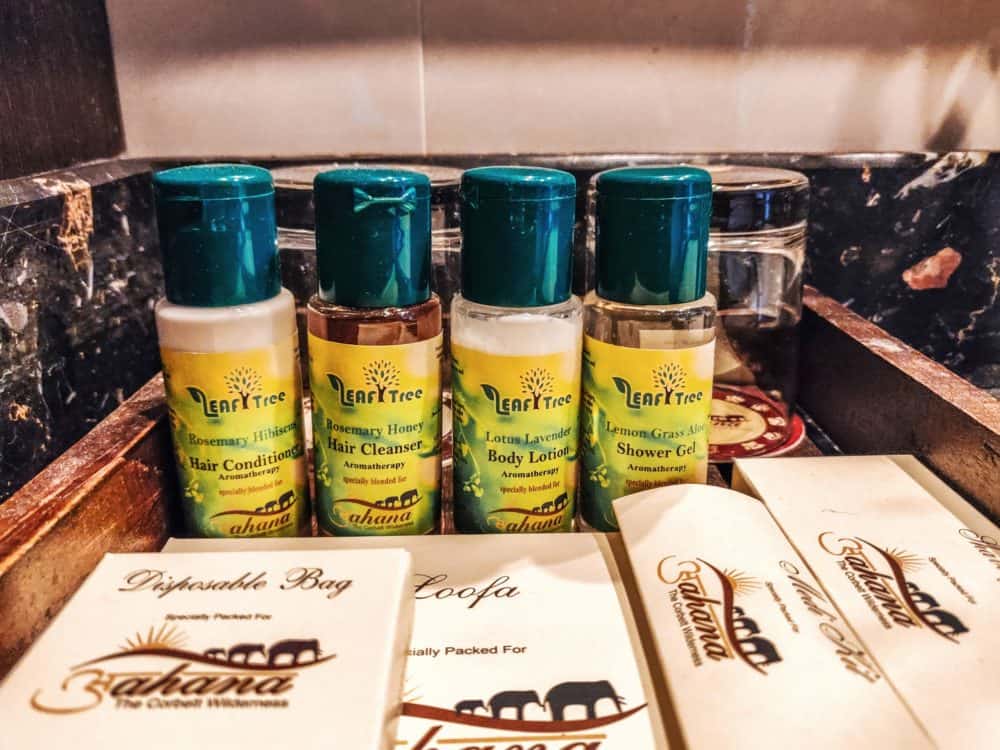
This is yet another important sustainable traveling step to follow on every trip. You will often come across accommodations that offer complimentary towels, soaps, shampoos, toothbrushes, etc.
Well, avoid using these resources or limit the number of resources that you use. This is because if you use more toiletries, they would have to buy more products which will, in turn, increase the carbon emission.
You can bring your own reusable toiletries and use them.
As for the towels, you can use their towels but don’t send it in the laundry every day. Because the more you wash, the more electricity is used which impacts the environment.
Switch Off the Applications When Not in Use
This one is a no-brainer really. Every time you leave your room, make sure you switch off all the appliances in your room.
Don’t leave the A.C, television, etc. switches on as it still consumes electricity when you aren’t in the room.
Also, make sure you turn all the switches off, regardless of any devices being plugged in or not.
Stay in an Eco-Hotel on Your Trip

If you don’t want to share a room with strangers then there is one more thing you can do. Instead of staying in a regular hotel, you can search for an eco-hotel and book a room there.
What is an eco-hotel?
It is basically a hotel that is environmentally sustainable and follows green living.
So, they have made modifications in their hotel so that they have minimum impact on the surrounding environment. They might use organic soaps, renewable sources of energy, recycling programs, etc.
If you stay in such a hotel, your carbon emission will be less than what it would be by staying in a regular hotel.
Reduce the Number of Items You Buy in a Year
As I have explained earlier, the manufacturing of products consumes a lot of energy resources.
As a result, a lot of greenhouse gases are released into the atmosphere. This could be because of the ingredients, transportation, packaging, electricity used, and so on.
So, if you reduce the number of articles you buy in a year, you can greatly reduce your carbon footprint.
Plant Seeds Wherever You Can

Recently, someone told me that you can actually buy a packet of seed balls which you can then plant anywhere you go.
This is honestly a great idea and can be a great way to make up for the years of deforestation. After all, the more trees and plants we have the better.
Because then these plants can absorb the CO2 in our environment and release more oxygen, hence cleaning the atmosphere. This is definitely a long shot but it is a good way to make up for your daily CO2 emissions.
Repurpose the Products at Home
Finally, there are a lot of products at home which you can repurpose to use for traveling.
You can make your own shampoo or face washes at home quite easily. And then you can use your previously used shampoo bottles to store them for traveling.
And this is a tried and tested method. At our house, my mom prepares our face wash, hand wash, and shampoo which we use them. So, all these previously ordered bottles come really handy to store them.
Another personal example is when I needed a bottle that I could hang around my shoulders for treks. So, instead of buying a bottle bag, my mother made a handle using the ropes at home which was quite effective.
There are so many other ideas that you can find if you really put your mind to it. So, try to repurpose as many products as you can before you throw them out or send them for recycling.
Summary
I know it is easy to ignore climate change and make excuses that there is not a lot we can do. But if we just manage our carbon footprints, then we can really help in slowing down the climate change process.
And yes, a lot of these steps sound intimidating and will not be easy. But there are so many steps that are quite easy to implement while traveling. Also, a few of these steps will require constant effort because we are not in the habit of doing them.
For example, for the past 2 years, I have taken flights just for two trips.. Also, I have greatly reduced the use of plastic.
Choosing products that don’t come in a plastic bag or packaging is difficult and requires constant effort. But I did find a lot of alternatives that I wouldn’t have thought of before and now it feels almost natural to me.
In the end, it is about being conscious of your choices. This is why I urge you to travel sustainably if you truly wish to travel and explore the world.
Do let us know in the comments of any other sustainable travel tips that you think is doable.





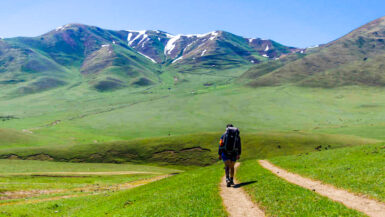
Leave a reply